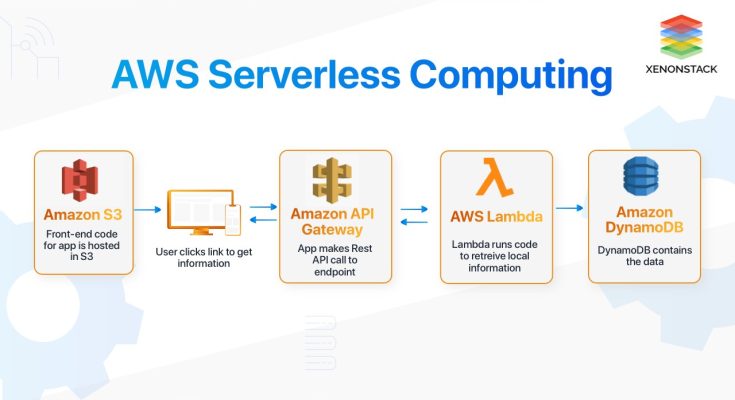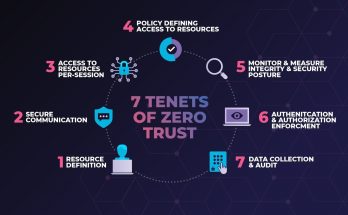Serverless architecture has emerged as one of the most transformative concepts in cloud computing, offering a fundamentally different way to build and deploy applications. Despite the name, serverless doesn’t mean there are no servers involved. Instead, it refers to a model where developers don’t have to manage the underlying infrastructure. The cloud provider takes care of provisioning, scaling, and maintaining servers, allowing developers to focus solely on writing code and delivering functionality. This shift in responsibility has profound implications for agility, cost-efficiency, and scalability, making serverless an increasingly popular choice for modern application development.
At the heart of serverless architecture is the idea of event-driven execution. Applications are broken down into discrete functions that run in response to specific triggers, such as an HTTP request, a file upload, or a database update. These functions are stateless and ephemeral, meaning they execute quickly and terminate once the task is complete. This model contrasts sharply with traditional server-based applications, which often require long-running processes and constant resource allocation. By decoupling execution from infrastructure, serverless enables developers to build highly modular and responsive systems that scale automatically based on demand.
One of the most compelling advantages of serverless architecture is its cost model. In traditional cloud setups, businesses pay for server uptime regardless of usage. With serverless, they pay only for the compute time consumed by each function. This pay-as-you-go approach can lead to significant savings, especially for applications with variable or unpredictable workloads. For example, an e-commerce site might experience traffic spikes during holiday sales. In a serverless environment, the application scales seamlessly to handle the surge, and the business pays only for the actual usage, not for idle capacity during quieter periods.
Serverless also accelerates development cycles. Without the need to manage infrastructure, teams can deploy new features and updates more quickly. Functions can be developed, tested, and deployed independently, reducing dependencies and simplifying version control. This modularity aligns well with agile methodologies and continuous integration practices. A startup building a mobile app, for instance, can iterate rapidly by deploying serverless functions for user authentication, payment processing, and notifications, each maintained separately and updated as needed. This flexibility empowers teams to innovate faster and respond to user feedback with greater agility.
However, serverless architecture is not without its challenges. One of the most commonly cited concerns is cold start latency. Because serverless functions are not always running, there can be a delay when a function is invoked after a period of inactivity. This delay, while often measured in milliseconds, can impact user experience in latency-sensitive applications. Cloud providers have made strides in minimizing cold starts, but developers must still consider this factor when designing systems that require real-time responsiveness.
Another consideration is the complexity of managing distributed systems. Serverless applications often consist of numerous small functions interacting with various services and data sources. While this modularity offers flexibility, it can also lead to challenges in debugging, monitoring, and maintaining coherence across the system. Tools for observability, such as distributed tracing and centralized logging, become essential in identifying issues and ensuring reliability. Developers must adopt new practices and tools to manage the intricacies of serverless environments effectively.
Security and compliance also require careful attention. While cloud providers handle much of the infrastructure security, developers are responsible for securing their code and managing access controls. Serverless functions often interact with sensitive data and external APIs, making it crucial to implement robust authentication, encryption, and auditing mechanisms. Additionally, organizations operating in regulated industries must ensure that serverless deployments comply with standards such as GDPR, HIPAA, or PCI-DSS. This requires a clear understanding of data flows and shared responsibility models.
Despite these challenges, the adoption of serverless architecture continues to grow across industries. Enterprises are using it to modernize legacy systems, startups are leveraging it to build scalable products with minimal overhead, and developers are embracing it as a way to focus on innovation rather than infrastructure. The ecosystem around serverless is also maturing, with frameworks, platforms, and best practices evolving to support more complex use cases. Technologies like AWS Lambda, Azure Functions, and Google Cloud Functions are leading the charge, offering robust environments for building serverless applications.
Ultimately, serverless architecture represents a shift in how we think about computing. It abstracts away the infrastructure layer, allowing developers to concentrate on delivering value. It aligns with broader trends in cloud computing, such as automation, scalability, and efficiency. And while it’s not a one-size-fits-all solution, its benefits are compelling enough to warrant serious consideration for a wide range of applications. As businesses continue to seek ways to innovate faster and operate leaner, serverless offers a powerful model for building the next generation of digital experiences.



